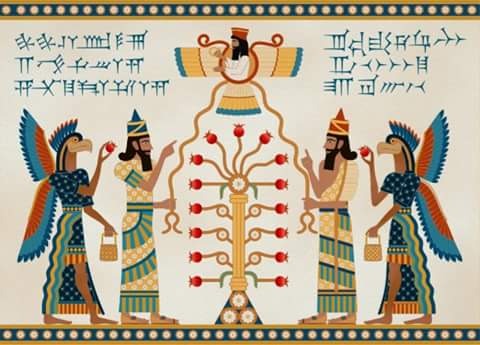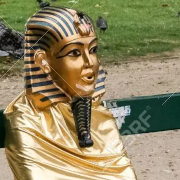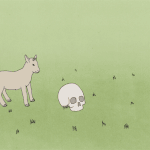Squizzle posted:and after a decade of saying that no one needs a book on nyc because everyone is already familiar we it via its cultural presence, white wolf published new york by nite w a street date of like a week before 9/11. justin achilli, the vampire dev, got real wound up about people talking about how particular current events could fit into the world of darkness and posted some all caps thread title like THIS IS NOT A GAME to tell people to stop speculating about how the lasombra downed flight 93 or w/e. didnt help that they were right in the middle of their middle east themed “year of the scarab” just like 3 Body Problem
|
|
|
|
|

|
| # ? Apr 27, 2024 23:56 |
|
you mean the three bodhisattvas who fought the ravnos antediluvian, leading the technocracy to use orbital solar focusing mirrors and spirit nukes, causing the avatar storms to form in the gauntlet, as well as precipitating the week of nitemares??? that 3 body problem??
|
|
|
|
Squizzle posted:my ol memory was playing tricks on us all, because ny by nite came out in november and had an intro hastily added that was like “yeah we had this mostly ready when the while towers thing happened. it wont be mentioned in the rest of this book. god bless america????” lol badass
|
|
|
|
i should clarify here that the technocracys spirit nukes are unrelated to the ghost nuke that xerxes jomes detonated right next to oblivion, nor the other scarcely-related ghost nuke that was employed to destroy the ghost city of enoch (where the true black hand dwelt, battling soul-eaters)—except that all three had the misfortune of being detonated w/in the same week. the ghost nukes, in fact, were detonated at about the same time (not intentionally), causing the sixth great mælstrom but all otherwise wholly unrelated
|
|
|
Squizzle posted:you mean the three bodhisattvas who fought the ravnos antediluvian, leading the technocracy to use orbital solar focusing mirrors and spirit nukes, causing the avatar storms to form in the gauntlet, as well as precipitating the week of nitemares??? that 3 body problem?? no but I get how they can get confused
|
|
|
|
|
3 bodhi problem
|
|
|
|
https://whitewolf.fandom.com/wiki/Mortality
|
|
|
Squizzle posted:9/11 presented unique challenges to white wolf
|
|
|
|
|
Squizzle posted:3 bodhi problem
|
|
|
|

|
|
|
|
That's just an Australian bumfuck nowhere town landmark
|
|
|
|
quote to charge, post to cast
|
|
|
|
aw frig aw dang it posted:quote to charge, post to cast
|
|
|
|

|
|
|
|
I have been reading that "Drawing Down the Moon" book and it's good. Drawing Down the Moon: Defining Magic in the Ancient Greco-Roman World posted:Proclus's description, in his treatise On Sacrifice and Magic, of what he calls the 'hieratic art' provides the best encapsulation of theurgic ritual from the ancient sources. The 'natural magic' of the Renaissance that forms the basis for much of the ideas of positive magic in the early modern and later periods comes from the reception of ancient ideas of theurgy, especially those of Proclus and his predecessor lamblichus. From the uses of the term in the ancient evidence, 'theurgy' may be defined as the art or practice of ritually creating a connection between the mortal, material world that is before one's eyes and the unseen, immortal world of the gods. Such a practice may be a lifelong assimilation of the individual soul to the divine, or it may be a momentary activation of the connection with divine power to achieve some more immediate end on earth.2 While theurgy, defined narrowly in modern scholarship, is often taken to be a particular set of ritual practices based in the revelations of the Chaldaean Oracles, the ancient evidence provides examples of theurgic practice that make no reference to this mysterious set of hexameter oracles.3 Nevertheless, 'theurgy' is not simply a label for any kind of ritual that practitioners want to distinguish from nonritual theology or philosophy, on the one hand, or from unacceptable magic, on the other.4 Although the ritual practices and the theological ideas underlying them shift from the time of the Chaldaean Oracles in the second century CE to the later Neoplatonists of the fourth and fifth centuries, theurgy always involves the activation of existing connections between mortal and immortal to bring the two together in some way or to some degree. Here's some stuff about Neoplatonism for all you folks who like Rome. quote:Theurgy Among the Elite quote:Neoplatonists and Christians
|
|
|
|
godworkers must seize the means of god production
|
|
|
|
It's true.
|
|
|
|
Squizzle posted:3 bodhi problem LITERALLY A BIRD posted:I have been reading that "Drawing Down the Moon" book and it's good. 
|
|
|
|
neoplatonists were extremely silly people and it's no surprise that their stagnation in minutiae was not as popular as believing there's a god who knows and loves you
|
|
|
|
Sherbert Hoover posted:neoplatonists were extremely silly people and it's no surprise that their stagnation in minutiae was not as popular as believing there's a god who knows and loves you
|
|
|
|
Sherbert Hoover posted:neoplatonists were extremely silly people and it's no surprise that their stagnation in minutiae was not as popular as believing there's a god who knows and loves you
|
|
|
|
Sherbert Hoover posted:neoplatonists were extremely silly people and it's no surprise that their stagnation in minutiae was not as popular as believing there's a god who knows and loves you but once the red space apostle has used his drill to smash the tube sending a wave of good energy from gods tube to cover the galaxy, where will you find refuge if not the perfect realm of forms (i.e. the supertrain mega zord)
|
|
|
|
let plotinus cook
|
|
|
|
yeah i bet you like monads
|
|
|
|
Squizzle posted:but once the red space apostle has used his drill to smash the tube sending a wave of good energy from gods tube to cover the galaxy, where will you find refuge if not the perfect realm of forms (i.e. the supertrain mega zord) trying to pierce the heavens with my drill but all i get is a noise complaint and a public nuisance charge
|
|
|
|
hope everyone is feeling good about 6774 as the new year arrives
|
|
|
|
merry x-muk
|
|
|
|
Sherbert Hoover posted:merry x-muk x-muk 97 is great so far btw
|
|
|
|
Sherbert Hoover posted:yeah i bet you like monads
|
|
|
|
Orbs posted:What the gently caress is a monad this is a username post combo of exquisite quality
|
|
|
|
Squizzle posted:this is a username post combo of exquisite quality
|
|
|
|
Le monade
|
|
|
|
Orbs posted:What the gently caress is a monad It is very complicated and differs between Hellenistic and late antique philosophy, but ancient Mediterranean philosophy was pretty obsessed with the idea that everything is made of things, both physically and metaphysically, like we are made of not only bone atoms and meat atoms, but also beauty, intelligence, man, poster, etc. Many philosophers believed that on some level there is beauty etc. by itself and these forms and all creation are emanations of the monad, a kind of singularity or godhead that exhibits perfect unity, of which everything else and all ideas are lesser and lesser copies and divisions. When Christianity took over, theologians dropped most of the numerology and physics aspects of it but kept the idea of God's omnipresence.
|
|
|
|
Orbs posted:What the gently caress is a monad it means your balls op
|
|
|
|
Sherbert Hoover posted:It is very complicated and differs between Hellenistic and late antique philosophy, but ancient Mediterranean philosophy was pretty obsessed with the idea that everything is made of things, both physically and metaphysically, like we are made of not only bone atoms and meat atoms, but also beauty, intelligence, man, poster, etc. Many philosophers believed that on some level there is beauty etc. by itself and these forms and all creation are emanations of the monad, a kind of singularity or godhead that exhibits perfect unity, of which everything else and all ideas are lesser and lesser copies and divisions. When Christianity took over, theologians dropped most of the numerology and physics aspects of it but kept the idea of God's omnipresence. i am the platonic ideal of the beauty poster man
|
|
|
|
Sherbert Hoover posted:neoplatonists were extremely silly people and it's no surprise that their stagnation in minutiae was not as popular as believing there's a god who knows and loves you Well all the minutiae is because it was a system of philosophy, an attempt to perceive and articulate the secret workings of reality and the cosmos. The minutiae (metaphysics) of Neoplatonism centered a need for individual spiritual improvement and development to be able to approach and be reassimilated by the One, pure goodness, the source of everything (right? IANAN). Whether the Gods of a religion, in this case considered as beings created of that greater Divine, are capable of knowing and loving their mortal worshippers is on a different theological axis entirely. (And they were, of course.) I propose a more accurate statement here would be that it's no surprise a religious philosophy which demands a constant striving toward ethical perfection for ultimate salvation was not as popular as believing that Jesus saves and you'll take no damage. also after Rome picked Christianity as the state religion they outlawed paganism and pagan practice and closed all the non-Christian philosophy schools and told everyone to convert or be arrested and lose your citizenship / probably be killed shortly thereafter. So that would have contributed a little too
|
|
|
|
blatman posted:i am the platonic ideal of the beauty poster man yeah you are
|
|
|
|
It is on a different axis, but they're linked historically. The focus on metaphysics had done a great deal to chip away at educated people's belief in the traditional pagan mythos, which is why they started importing their religion from the east in the form of Christianity and various mystery cults, and why gnosticism is basically a fusion of everything but the traditional pantheon.
|
|
|
|
 that makes sense. Okay, so they shouldn't have split the Deities from the dialectics. Got it. We can fix that. Gods for everyone. that makes sense. Okay, so they shouldn't have split the Deities from the dialectics. Got it. We can fix that. Gods for everyone.
|
|
|
|

|
| # ? Apr 27, 2024 23:56 |
|
how do we feel about deus ex machina? I have had a very fortunate string of "tech luck" recently where devices worked painlessly when they absolutely should not have and with minimal fuss and effort. to which deity do i owe my thanks and future offerings
|
|
|

























